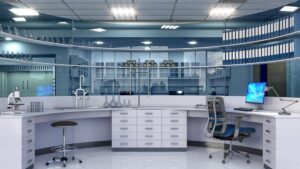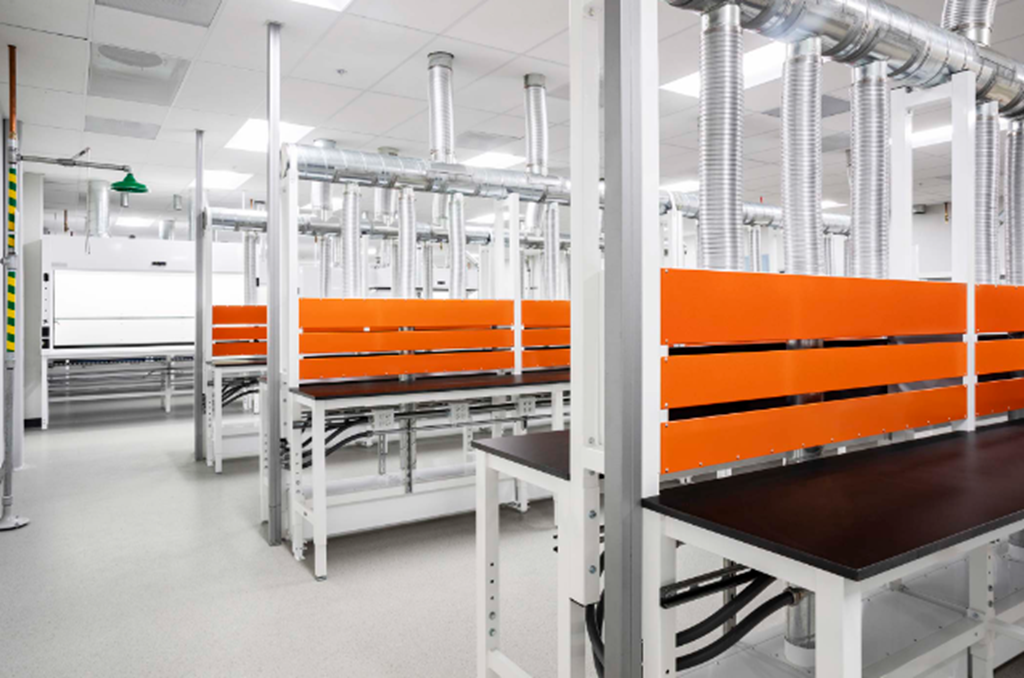
In the realm of laboratory design, selecting the right materials is crucial to ensure safety, efficiency, and longevity. Laboratories are environments that demand robust, resilient, and adaptable materials capable of withstanding harsh chemicals, extreme temperatures, and rigorous daily use. Among the myriads of options available, steel stands out as an exceptional choice, offering unparalleled durability and versatility.
This article delves into the benefits of utilizing steel in laboratory settings, with a special focus on powder-coated steel, alongside stainless and galvanized steel. These materials not only meet the stringent requirements of lab environments but also provide additional advantages in terms of safety, hygiene, and cost-effectiveness.
Whether you are designing a new lab or upgrading an existing one, understanding the strengths of these steel options can guide you in making informed decisions that enhance both functionality and aesthetics.
The Unique Demands of Laboratory Environments
Laboratories are unique spaces that require careful consideration in every aspect of their design and construction. Unlike typical office or commercial environments, labs must meet stringent criteria to ensure the safety of personnel, the integrity of experiments, and the durability of the facility.
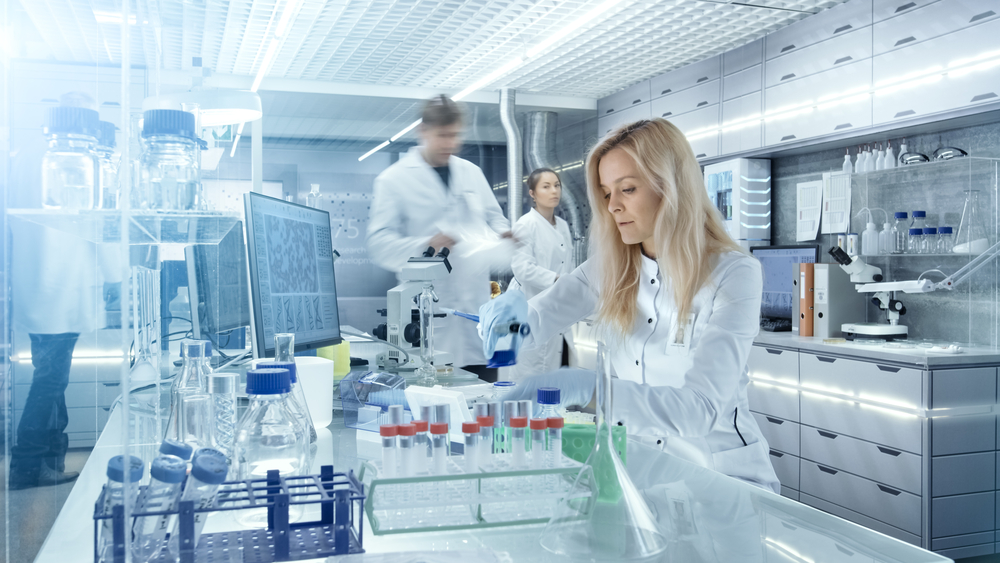
Understanding these demands is essential for choosing the right materials, and steel stands out as an exemplary option to meet these rigorous needs.
1. Chemical Resistance
Laboratories often involve the use of harsh chemicals and reagents that can cause corrosion and degradation of materials over time. The surfaces and structures within a lab must be resistant to chemical spills, splashes, and fumes to maintain a safe and functional environment.
Steel, especially when powder-coated or made from stainless alloys, offers excellent resistance to a wide range of chemicals, ensuring longevity and reliability in such challenging conditions.
2. Hygiene and Cleanability
Maintaining a sterile environment is critical in many lab settings, particularly in fields such as biotechnology, pharmaceuticals, and healthcare. Materials used in labs must be non-porous and easy to clean to prevent the growth of bacteria, mold, and other contaminants. Steel’s smooth, non-porous surface facilitates thorough cleaning and disinfection, making it an ideal choice for maintaining high hygiene standards.
3. Temperature Stability
Laboratories often experience fluctuating temperatures due to various experiments and equipment operations. Materials used in lab construction must be able to withstand these temperature variations without compromising structural integrity or performance. Steel’s exceptional thermal stability ensures that it remains unaffected by such changes, providing a consistent and reliable material for lab infrastructure.
4. Mechanical Durability
The daily activities in a laboratory can be demanding on the physical structures within the space. From heavy equipment and constant movement of personnel to the need for robust storage solutions, lab environments require materials that can endure physical stress without showing signs of wear and tear.
Steel’s inherent strength and durability make it capable of withstanding such rigorous use, ensuring that lab furnishings and structures remain in excellent condition over time.
5. Compliance with Safety Standards
Lab environments must adhere to stringent safety regulations and standards to protect both workers and research integrity. Materials used in labs need to meet these regulatory requirements to ensure a safe working environment. Steel, particularly when powder-coated, stainless, or galvanized, meets and often exceeds these safety standards, providing peace of mind that the lab is compliant with necessary regulations.
By addressing these unique demands, steel emerges as a superior material for laboratory environments. Its chemical resistance, hygiene benefits, temperature stability, mechanical durability, and compliance with safety standards make it an ideal choice for creating safe, efficient, and long-lasting lab spaces.
Why Steel Stands Out
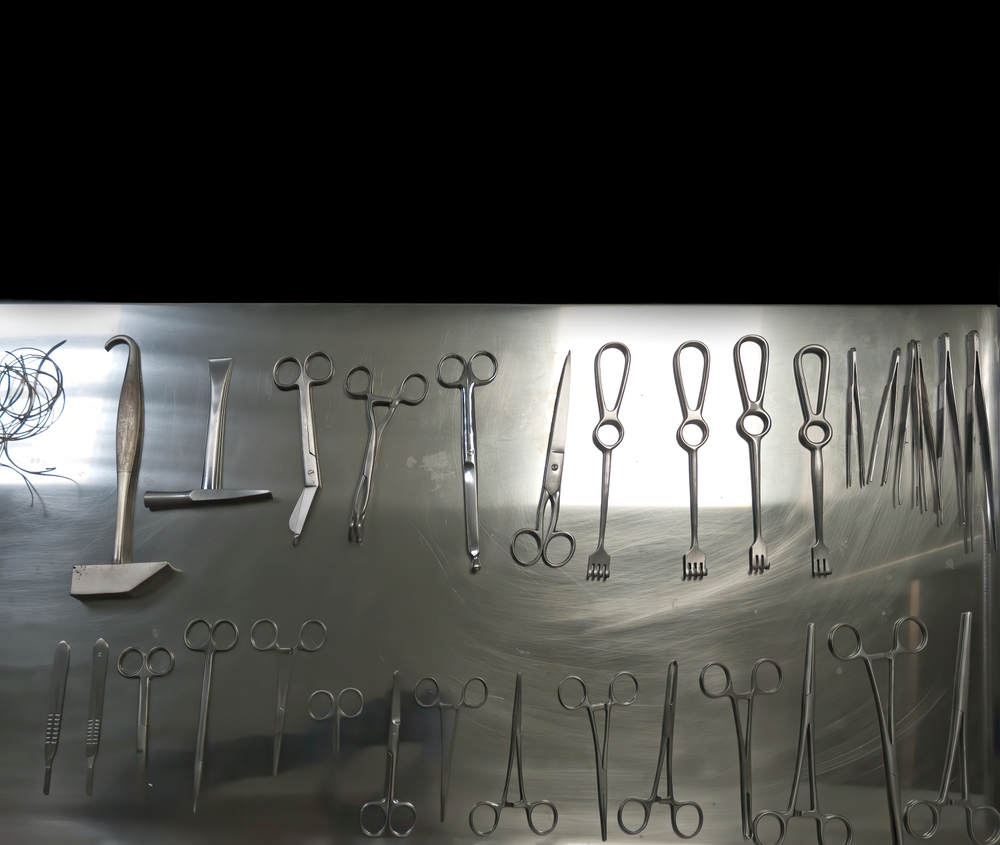
When it comes to choosing materials for laboratory environments, steel consistently rises to the top due to its exceptional properties. The unique demands of laboratories—ranging from chemical resistance to durability—require materials that can reliably perform under diverse and challenging conditions. Here’s a closer look at why steel stands out as the ideal choice for lab settings.
1. Durability and Strength
One of the foremost reasons steel is preferred in laboratory environments is its unparalleled durability and strength. Laboratories are high-activity spaces where furniture and fixtures must endure heavy use, equipment movement, and even occasional impacts.
Steel’s robust nature ensures it can withstand such physical stresses without deforming, breaking, or showing signs of wear and tear. This durability translates into long-term cost savings, as steel fixtures require less frequent replacement and maintenance compared to other materials.
2. Corrosion Resistance
In laboratories, exposure to chemicals and reagents is a common occurrence. Steel, particularly stainless and powder-coated varieties, offers excellent resistance to corrosion and chemical damage. Stainless steel, with its high chromium content, forms a protective layer that prevents rust and corrosion, even when exposed to harsh chemicals.
Powder-coated steel adds another layer of protection, enhancing its resistance to moisture and chemical attacks. This corrosion resistance is crucial for maintaining the integrity and safety of lab environments over time.
3. Hygiene and Cleanability
Maintaining a sterile environment is critical in many laboratory settings. Steel’s non-porous surface is easy to clean and disinfect, which helps in preventing the accumulation of bacteria, mold, and other contaminants. Stainless steel, in particular, is known for its excellent sanitary properties, making it a preferred material in medical, pharmaceutical, and food laboratories.
The smooth surfaces of powder-coated steel further enhance its cleanability, ensuring that lab spaces remain hygienic and compliant with health regulations.
4. Thermal and Chemical Stability
Laboratories often experience wide temperature fluctuations due to various experiments and equipment usage. Steel’s thermal stability ensures that it remains unaffected by these changes, maintaining its structural integrity and performance.
Moreover, steel is highly resistant to chemical reactions, making it suitable for environments where exposure to volatile substances is common. This stability is essential for ensuring the safety and reliability of lab structures and equipment.
5. Versatility and Customization
Steel’s versatility is another significant advantage. It can be fabricated into a wide range of shapes and sizes to meet specific design requirements. Whether it’s custom lab benches, storage cabinets, or specialized fixtures, steel can be tailored to fit the unique needs of any laboratory.
Powder-coated steel offers additional aesthetic flexibility, with a variety of color options that can match the design and functional requirements of the lab. This adaptability makes steel an ideal material for modern and efficient lab designs.
6. Environmental Sustainability
Steel is a highly sustainable material, contributing to eco-friendly building practices. It is 100% recyclable, and recycled steel retains the same properties as new steel, making it a sustainable choice for lab construction. Additionally, the longevity and durability of steel mean that fewer resources are needed for repairs and replacements over time, reducing the overall environmental impact of the laboratory.
By combining these outstanding properties, steel proves to be an ideal material for laboratory environments. Its durability, corrosion resistance, hygiene benefits, thermal and chemical stability, versatility, and sustainability make it a smart and reliable choice for creating safe, efficient, and long-lasting lab spaces.
Types of Steel Used in Laboratories
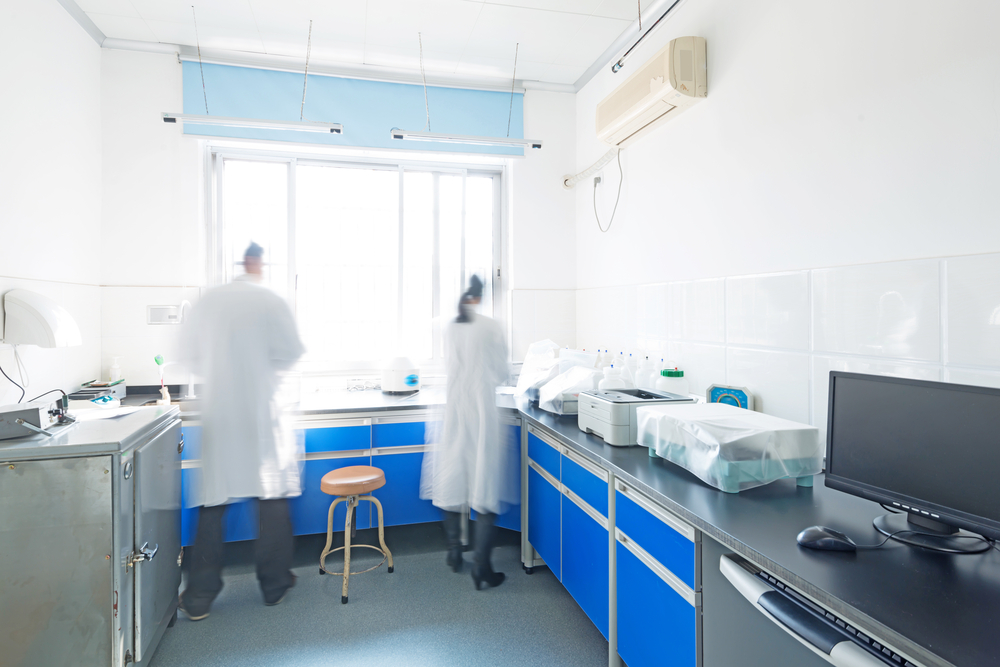
Steel is not a one-size-fits-all material; it comes in various types, each offering unique benefits tailored to specific laboratory needs. In lab environments, three primary types of steel are commonly used: powder-coated steel, stainless steel, and galvanized steel. Understanding the characteristics and advantages of each type can help in selecting the right material for different lab applications.
1. Powder-Coated Steel
Powder-coated steel is renowned for its enhanced durability and aesthetic versatility. This type of steel undergoes a finishing process where a dry powder is applied electrostatically and then cured under heat to form a protective layer. This coating provides several benefits:
- Enhanced Corrosion Resistance: The powder coating creates a barrier that protects the steel from moisture and chemical exposure, reducing the risk of rust and corrosion.
- Aesthetic Flexibility: Available in a wide range of colors and finishes, powder-coated steel can be customized to match the design requirements of any laboratory.
- Durability: The coating adds an extra layer of durability, making the steel resistant to chipping, scratching, and wear. This is particularly useful in high-traffic lab environments.
- Ease of Cleaning: The smooth, non-porous surface of powder-coated steel is easy to clean and disinfect, promoting hygiene and safety in the lab.
Related Reading: Powder Coating Metal – Genie Scientific
2. Stainless Steel
Stainless steel is a popular choice in laboratories for its exceptional resistance to corrosion and its hygienic properties. Composed primarily of iron, chromium, and nickel, stainless steel forms a passive layer of chromium oxide on its surface, which protects against rust and staining. Key benefits include:
- Corrosion Resistance: Stainless steel is highly resistant to rust, even when exposed to harsh chemicals, making it ideal for wet or corrosive environments.
- Hygiene: Its non-porous, easy-to-clean surface prevents the growth of bacteria, mold, and other contaminants. This makes stainless steel a preferred material in medical, pharmaceutical, and food laboratories.
- Thermal Stability: Stainless steel can withstand high temperatures without deforming or losing its strength, making it suitable for a variety of lab applications.
- Aesthetic Appeal: The sleek, modern look of stainless steel adds a professional and clean appearance to laboratory spaces.
3. Galvanized Steel
Galvanized steel is steel that has been coated with a layer of zinc to protect it from corrosion. This process, known as galvanization, provides a cost-effective solution for environments that require durability and resistance to rust. Advantages of galvanized steel include:
- Corrosion Protection: The zinc coating acts as a sacrificial layer, preventing the underlying steel from corroding. This makes galvanized steel an excellent choice for environments with high humidity or exposure to moisture.
- Affordability: Galvanized steel is generally more cost-effective than stainless steel, making it a budget-friendly option for many lab applications.
- Durability: While not as resistant to corrosion as stainless or powder-coated steel, galvanized steel still offers significant protection and durability for many laboratory uses.
- Versatility: Galvanized steel can be used in a variety of applications, from structural components to laboratory furniture and fixtures.
Comparison and Applications
Each type of steel brings unique strengths to the table, making them suitable for different lab applications:
- Powder-Coated Steel: Ideal for lab furniture, storage solutions, and equipment that require both durability and aesthetic customization.
- Stainless Steel: Best suited for environments that demand high hygiene standards, such as medical, pharmaceutical, and food labs. It is also excellent for areas exposed to aggressive chemicals and high temperatures.
- Galvanized Steel: A cost-effective option for structural components and areas where moisture exposure is a concern, but where the highest levels of chemical resistance are not necessary.
By understanding the specific benefits of powder-coated, stainless, and galvanized steel, lab designers and builders can make informed choices that enhance the functionality, safety, and longevity of their laboratory environments.
Safety and Hygiene Benefits
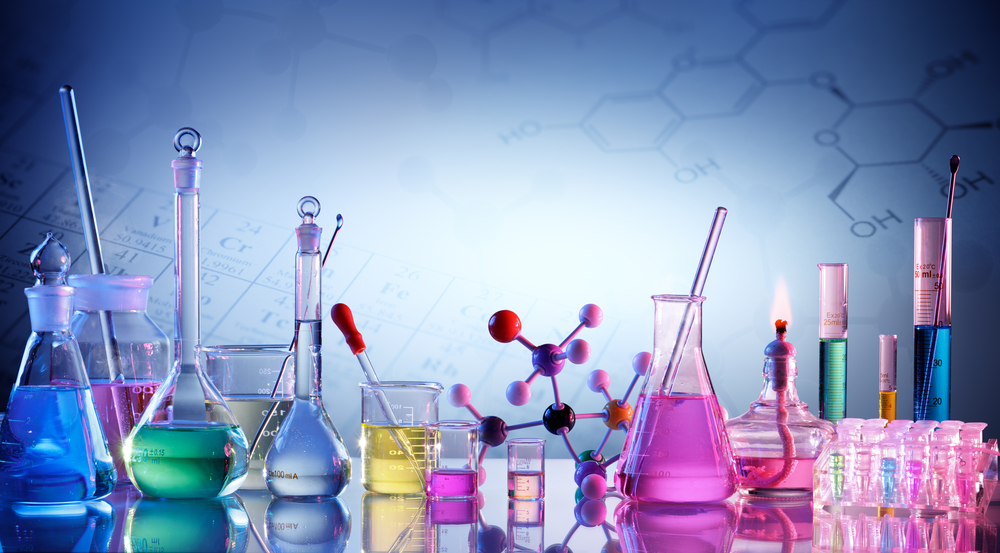
Safety and hygiene are paramount in laboratory environments, where the integrity of experiments and the well-being of personnel depend on maintaining a clean and secure workspace. Steel, particularly powder-coated, stainless, and galvanized varieties, offers significant advantages in these critical areas. Here’s how these types of steel contribute to the safety and hygiene of lab environments:
1. Non-Porous Surface
One of the key benefits of steel in laboratory settings is its non-porous surface. Unlike materials that can absorb liquids and harbor bacteria, steel provides a smooth, impermeable surface that prevents the absorption of spills and contaminants. This characteristic is essential for maintaining sterility and preventing cross-contamination, which is crucial in labs dealing with sensitive biological or chemical materials.
2. Resistance to Bacteria and Contaminants
Steel, especially stainless and powder-coated varieties, is highly resistant to bacteria and other contaminants. The non-porous nature of steel makes it difficult for microorganisms to adhere to its surface, reducing the risk of contamination.
This is particularly important in medical, pharmaceutical, and food laboratories, where maintaining a germ-free environment is critical. Regular cleaning and disinfection of steel surfaces are straightforward, ensuring that labs remain safe and hygienic.
3. Ease of Cleaning and Maintenance
The smooth surface of steel is not only resistant to bacteria, but also easy to clean and disinfect. Standard cleaning agents and disinfectants can be used without damaging the steel, allowing for thorough sanitation routines.
This ease of maintenance helps laboratories meet stringent health and safety standards, ensuring a clean environment for both personnel and experiments. Powder-coated steel, with its additional protective layer, is particularly resistant to staining and can be cleaned repeatedly without losing its finish.
4. Chemical and Corrosion Resistance
Laboratories frequently handle a variety of chemicals that can be harsh and corrosive. Stainless steel and powder-coated steel are particularly resistant to chemical corrosion, ensuring that work surfaces, storage cabinets, and other fixtures do not degrade over time due to chemical exposure.
This resistance is crucial for maintaining the structural integrity of lab furnishings and preventing safety hazards associated with corrosion, such as weakened structures or compromised containment.
5. Fire Resistance
Steel is inherently fire-resistant, adding an extra layer of safety in laboratory environments. Unlike materials that can ignite or degrade under high temperatures, steel maintains its structural integrity even in the event of a fire. This property is vital for ensuring the safety of laboratory personnel and protecting valuable equipment and research from fire damage.
Stainless steel, in particular, can withstand high temperatures without losing its strength or shape, making it an ideal material for lab environments where fire safety is a concern.
6. Compliance with Safety Regulations
Using steel in laboratory construction and furnishing helps labs comply with various safety and health regulations. Steel’s inherent properties—such as its non-porous surface, resistance to chemicals and bacteria, and fire resistance—align with the requirements set by health and safety regulatory bodies.
By choosing steel, laboratories can ensure they meet or exceed these standards, providing a safer environment for research and work.
7. Powder-Coated Steel for Enhanced Safety
Powder-coated steel offers additional safety benefits beyond those of uncoated steel. The powder coating process creates a durable, scratch-resistant surface that protects the underlying steel from damage.
This added layer of protection not only enhances the steel’s resistance to chemicals and corrosion but also ensures that surfaces remain intact and safe for use over time. The variety of color options available with powder coating can also be used to designate specific areas or equipment, aiding in the organization and safety protocols within the lab.
By leveraging the safety and hygiene benefits of powder-coated, stainless, and galvanized steel, laboratories can create environments that protect both personnel and research integrity. These materials’ durability, resistance to contaminants, and ease of maintenance make them indispensable in achieving the highest standards of safety and cleanliness in lab settings.
Versatility and Design Flexibility
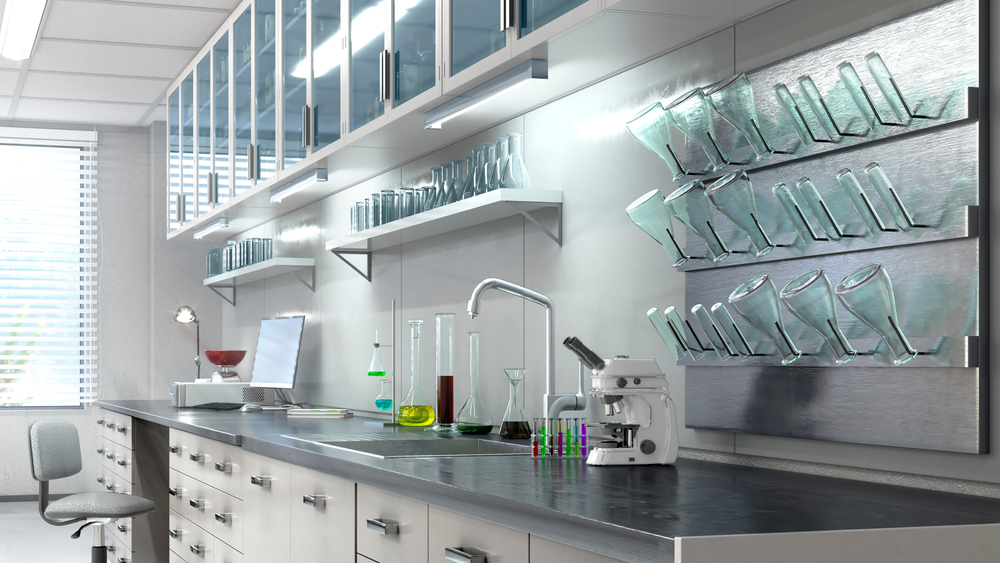
Steel’s versatility and design flexibility make it an outstanding choice for laboratory environments, where functional requirements can vary widely. From custom lab benches and storage solutions to specialized equipment and fixtures, steel can be fabricated and finished to meet the unique needs of any lab setting. Here’s a closer look at how the adaptability of steel enhances lab design.
1. Customization Options
Steel’s inherent strength and workability allow it to be shaped and fabricated into a wide range of forms. This flexibility is particularly advantageous in laboratory design, where custom solutions are often needed to accommodate specific equipment, workflows, and safety requirements.
Whether it’s creating tailored lab benches, integrated storage systems, or unique structural components, steel can be precisely engineered to fit the exact specifications of any lab.
2. Powder-Coated Steel for Aesthetic and Functional Customization
Powder-coated steel offers even greater versatility by adding a layer of customization in terms of color and finish. The powder coating process provides a durable, protective layer that comes in a wide variety of colors, allowing lab designers to match the aesthetic and functional requirements of the space.
Color-coding different areas or equipment can enhance organization, safety, and efficiency within the lab. Additionally, the smooth, attractive finish of powder-coated steel contributes to a professional and modern laboratory appearance.
3. Integration with Other Materials and Technologies
Steel’s versatility extends to its ability to integrate seamlessly with other materials and technologies. For example, steel lab furniture can incorporate surfaces made of glass, wood, or specialized laminates, combining the strengths of multiple materials to meet specific lab needs.
Steel’s compatibility with various technologies, such as integrated lighting, ventilation systems, and adjustable components, further enhances its suitability for contemporary lab environments.
4. Aesthetic Benefits
In addition to its functional advantages, steel provides significant aesthetic benefits. The sleek, modern look of stainless steel and the customizable finishes of powder-coated steel can create a visually appealing lab environment that reflects a professional and cutting-edge image.
This is particularly important in laboratories that host tours, clients, or collaborative projects, where the appearance of the space can impact perceptions of the lab’s quality and capabilities.
5. Modular Design Possibilities
Steel’s strength and stability make it an ideal material for modular lab designs. Modular systems allow for flexible and adaptable lab configurations, which can be easily reconfigured as research requires change. This adaptability is crucial in dynamic research environments, where new projects and evolving technologies require frequent adjustments to the lab setup.
Steel’s ability to support modular components ensures that labs can remain functional and efficient even as their needs evolve.
6. Ease of Installation and Reconfiguration
The ease with which steel components can be installed and reconfigured is another significant advantage. Steel lab furniture and fixtures are typically designed for straightforward assembly and installation, reducing downtime and disruption during lab setup or renovation.
Additionally, the robustness of steel means that reconfigurations can be performed without compromising the integrity of the materials, allowing labs to adapt quickly and efficiently to new requirements.
7. Long-Term Value
The long-term value of steel in lab design cannot be overstated.
Its durability and low maintenance requirements mean that steel lab furniture and fixtures provide lasting performance, reducing the need for frequent replacements and repairs. This longevity translates into cost savings over time, making steel a smart investment for any laboratory looking to maximize its budget without sacrificing quality or functionality.
By leveraging the versatility and design flexibility of steel, laboratories can create tailored, efficient, and aesthetically pleasing environments that meet their specific needs. The adaptability of powder-coated, stainless, and galvanized steel ensures that labs can achieve both functional excellence and visual appeal, supporting a wide range of research activities and operational requirements.
Related Reading: Steel Cabinets: The Smart Choice for Long-Lasting Laboratory Storage
Cost-Effectiveness and Long-Term Value
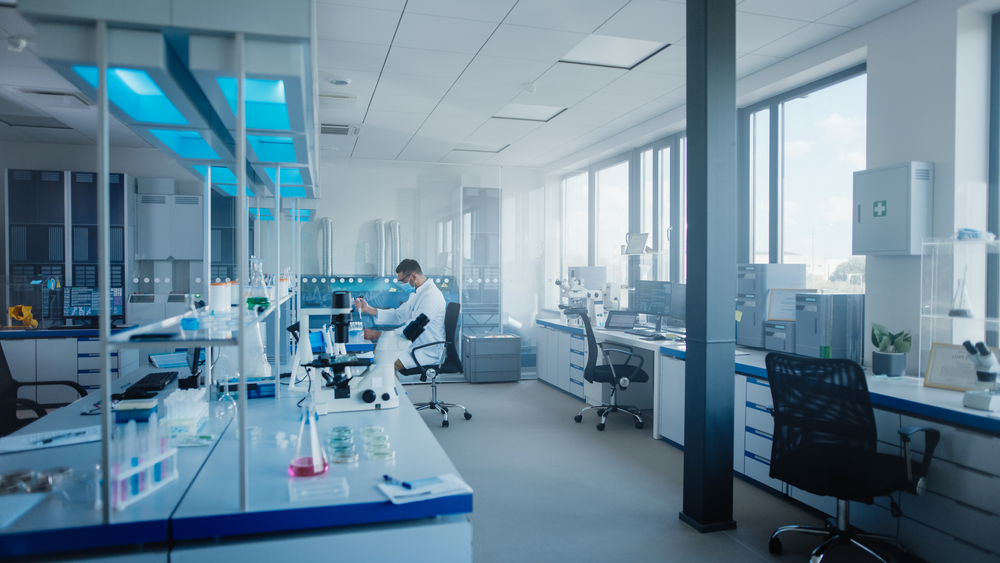
When designing and outfitting laboratory spaces, cost-effectiveness and long-term value are critical considerations. Steel, in its various forms such as powder-coated, stainless, and galvanized, offers significant advantages in both areas. Its durability, low maintenance requirements, and long lifespan make steel an economically wise choice for laboratories aiming to balance initial investment with long-term benefits.
1. Initial Investment vs. Long-Term Savings
While the initial cost of steel may be higher than some alternative materials, its long-term savings more than compensate for this initial outlay. Steel’s inherent strength and durability mean that it does not need to be replaced or repaired as frequently as materials that are more prone to damage and wear.
This longevity translates into significant cost savings over the lifespan of the laboratory, making steel a cost-effective investment.
2. Low Maintenance Requirements
One of the key factors contributing to steel’s cost-effectiveness is its low maintenance requirements. Steel surfaces, especially those that are powder-coated or made from stainless steel, are resistant to rust, corrosion, and staining.
This resistance reduces the need for frequent maintenance, cleaning, and repairs. Regular cleaning with standard agents is typically sufficient to keep steel lab furniture and fixtures in excellent condition, minimizing maintenance costs and downtime.
3. Durability and Longevity
Steel’s exceptional durability ensures that lab furniture and fixtures remain functional and aesthetically pleasing for many years. Unlike materials that may deteriorate or degrade under harsh lab conditions, steel maintains its integrity even in the face of heavy use, chemical exposure, and temperature fluctuations.
This long-lasting performance means that labs can avoid the frequent replacement cycles associated with less durable materials, resulting in substantial long-term savings.
4. Versatility and Reusability
Steel’s versatility and modular design potential also contribute to its cost-effectiveness. Steel lab components can be easily reconfigured or repurposed to meet changing needs, allowing labs to adapt their layouts without needing to invest in entirely new furnishings.
This reusability extends the value of the initial investment and provides flexibility to accommodate evolving research requirements.
5. Powder-Coated Steel for Added Value
Powder-coated steel, in particular, offers additional long-term value. The powder coating process not only enhances the steel’s resistance to corrosion and wear but also provides a durable finish that can withstand frequent cleaning and heavy use.
This added protection extends the lifespan of steel lab furniture and fixtures, ensuring that they remain in good condition for longer periods. Moreover, the aesthetic versatility of powder-coated steel allows for customization that can enhance the lab’s appearance and functionality, adding further value.
6. Sustainability and Environmental Impact
Steel’s sustainability also contributes to its long-term value. Steel is 100% recyclable, and using recycled steel in lab construction reduces the environmental impact and supports eco-friendly building practices. Additionally, the durability of steel means that fewer resources are required for replacements and repairs, further reducing the environmental footprint of the laboratory over time. Choosing steel aligns with sustainability goals and demonstrates a commitment to environmentally responsible practices.
Case Studies and Examples
Real-world examples and case studies illustrate the cost-effectiveness and long-term value of steel in laboratory environments. Labs that have invested in steel furnishings and fixtures often report significant savings in maintenance and replacement costs, as well as improved functionality and safety. This reinforces its reputation as a smart and economical choice.
By focusing on cost-effectiveness and long-term value, steel emerges as a superior material for laboratory environments. Its initial investment is offset by substantial long-term savings, low maintenance requirements, and exceptional durability.
Whether choosing powder-coated, stainless, or galvanized steel, laboratories can achieve a balance of functionality, aesthetics, and economic efficiency that supports their operational and financial goals.
Sustainability and Environmental Impact
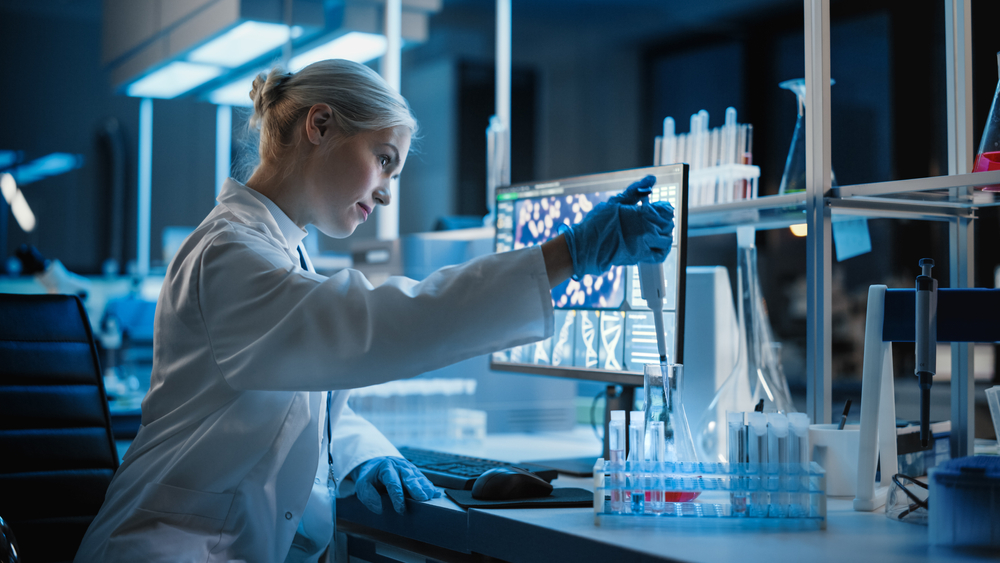
In today’s world, sustainability and environmental responsibility are key considerations in the design and construction of any facility, including laboratories. Steel, with its recyclable properties and low environmental impact, stands out as a highly sustainable material choice. This section explores the sustainability benefits of using steel in laboratory environments and its positive impact on the planet.
1. Recyclability of Steel
One of the most significant advantages of steel is its recyclability. Steel is 100% recyclable without loss of quality, making it a prime example of a sustainable material. When a steel product reaches the end of its useful life, it can be melted down and reused to create new steel products.
This closed-loop recycling process reduces the need for raw material extraction and minimizes waste, contributing to a more sustainable construction industry.
2. Reduction of Environmental Footprint
The production and use of recycled steel significantly reduce the environmental footprint compared to producing new steel from raw materials. Recycling steel consumes less energy and reduces greenhouse gas emissions, helping to mitigate the impact of construction activities on climate change.
Laboratories that choose steel can benefit from these environmental advantages, aligning their practices with global sustainability goals.
3. Longevity and Durability
The long lifespan of steel products further enhances their sustainability. Durable materials like steel require less frequent replacement and repair, which reduces the consumption of resources and the generation of waste over time. By investing in steel lab furniture and fixtures, laboratories can minimize their environmental impact and promote sustainable resource use.
4. Energy Efficiency in Production
Advancements in steel production technology have made the process more energy-efficient. Modern steel manufacturing facilities use less energy and produce fewer emissions than traditional methods. These improvements contribute to the overall sustainability of steel as a construction material, making it an even more attractive choice for environmentally conscious laboratory design.
5. Green Building Certifications
Using steel can help laboratories achieve green building certifications, such as LEED (Leadership in Energy and Environmental Design). These certifications recognize buildings that meet high standards for environmental performance, including energy efficiency, water conservation, and the use of sustainable materials. Incorporating steel into lab designs can contribute to earning these certifications, enhancing the lab’s reputation for sustainability.
6. Sustainable Coating Options
Powder-coated steel offers additional sustainability benefits. The powder coating process is more environmentally friendly than traditional liquid painting methods, as it emits fewer volatile organic compounds (VOCs) and generates less waste. Powder coatings also enhance the durability and lifespan of steel products, reducing the need for frequent recoating and maintenance. Genie steel cabinets are tested to SEFA 8 standards.
7. Reduction of Construction Waste
Using modular and prefabricated steel components in laboratory construction can significantly reduce construction waste. Steel components are often fabricated off-site and assembled on-site, which minimizes material wastage and reduces the environmental impact of construction activities. This approach also promotes efficient use of materials and reduces the overall environmental footprint of the lab project.
8. Support for Circular Economy
The use of steel aligns with the principles of the circular economy, which aims to keep materials in use for as long as possible and minimize waste.
By choosing steel, laboratories support a sustainable economic model that prioritizes resource efficiency, recycling, and the reduction of environmental impacts. This commitment to sustainability can enhance the lab’s reputation and contribute to broader environmental goals.
9. Environmental Responsibility in Supply Chains
Many steel manufacturers are committed to sustainable practices throughout their supply chains. This includes sourcing raw materials responsibly, reducing energy consumption in production, and minimizing environmental impacts.
Laboratories that choose steel from these manufacturers can be confident that they are supporting environmentally responsible practices and contributing to a more sustainable industry.
In summary, steel’s recyclability, durability, and energy-efficient production make it a highly sustainable material choice for laboratory environments. By incorporating steel into their designs, laboratories can reduce their environmental footprint, support green building certifications, and promote long-term sustainability.
The use of powder-coated, stainless, and galvanized steel further enhances these benefits, providing laboratories with durable, versatile, and eco-friendly solutions.
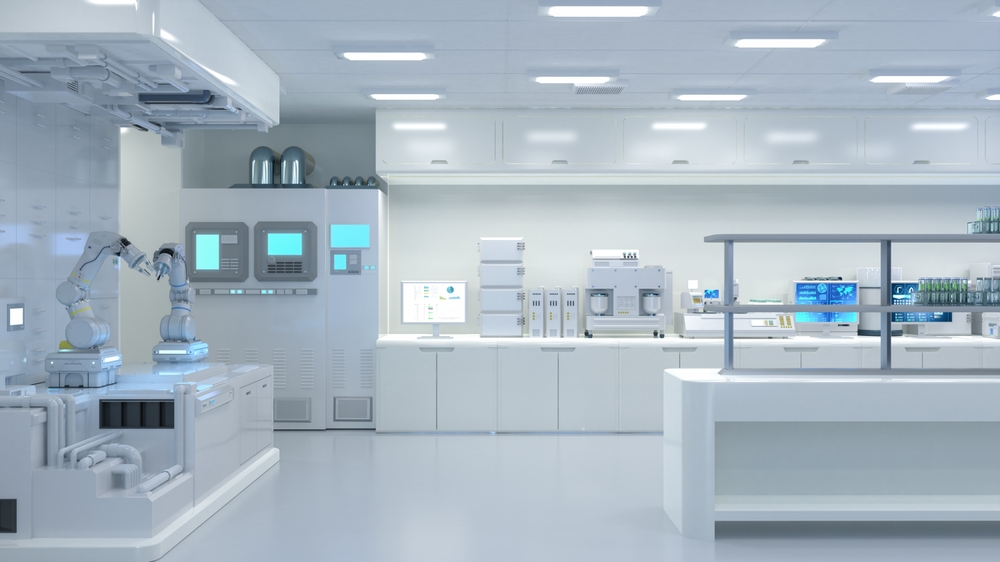
Conclusion
In the dynamic and demanding environment of laboratory design, choosing the right materials is essential for ensuring safety, functionality, and sustainability. Steel stands out as an exceptional choice, offering unmatched durability, resistance to chemicals, and ease of maintenance.
Whether utilizing powder-coated, stainless, or galvanized steel, laboratories can benefit from the versatility and design flexibility that steel provides, allowing for customized solutions tailored to specific needs.
The long-term cost-effectiveness and environmental sustainability of steel further enhance its appeal. By investing in steel, labs ensure a reliable and resilient infrastructure and contribute to a greener future through responsible material choices.
With its myriad of advantages, steel is undoubtedly a smart investment for any laboratory looking to foster innovation while maintaining a commitment to safety and sustainability.
If you’re ready to elevate your laboratory design with durable and sustainable steel solutions, contact Genie Scientific, your single source solution, today!
Our team of experts is here to help you navigate the best material choices for your specific needs, ensuring your lab is not only functional but also environmentally responsible. In-house sales, estimating, design, engineering, project management, sheet metal fabrication, powder coating, assembly, warehouse consolidation and QA/QC.
Let’s work together to create a safe, efficient, and innovative laboratory space that stands the test of time.

